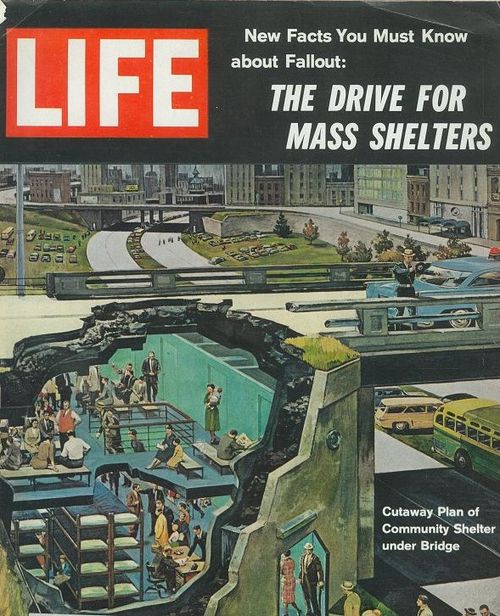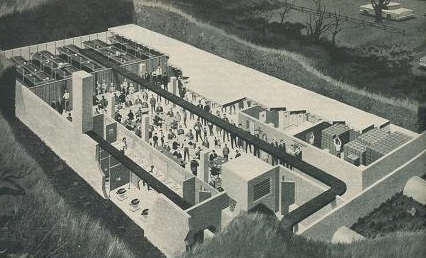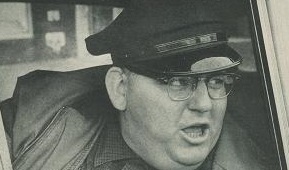JF Ptak Science Books Post 2453
I will not go down under the ground
Because someone tells me that death's comin' round;
I will not carry myself down to die
When I go to my grave my head will be high --
CHORUS:
Let me die in my footsteps
Before I go down under the ground.--Bob Dylan, "Let Me Die in My Footsteps", 1962
Why they were more often called "Fallout Shelters" and not the more demonstrable "Bomb Shelters"? I suspect that was so because the former implies that unless you're a corpse or incinerated that you've survived the initial blast and concussion and fire and firestorm of swirling sharp trash and now need to come to grips with the blast's aftermath, so "fallout shelter" it must be.
And in the many pictures and plans for survival pods that I have seen I cannot recall one that included a non-white member of the community. The maps I've seen showing locations of fallout shelters for Manhattan have a smattering of shelters at the top of Central Park/110th St, but not all that many for Harlem. (I've never seen an official map of the placement of the shelters, just reconstructions thus far.) No doubt there were many shelters in Harlem--I just don't know how many or in what regard they compared to other areas downtown for percentage of people who could be accommodated. Perhaps a bigger and more obvious question would be what sort of rules there would be in the deep South for the use of shelters, and whether in 1962 if they would be segregated or not.
- "If there are shelters in the black belt, no one knows where they are..." --Dr. Nathan Hare, "Can Negroes Survive a Nuclear War", in Negro Digest, May, 1963, pp 26-33. Full text at Afrocentric News, here.
This issue of LIFE magazine is a classic, with a number of pages and a few big image splashes dealing with the possibility of building mass shelters for clumps of the population, preparing for the Soviets to start launching thousands of warheads our way. The people gathering here are remarkably calm, wearing sports coats and ties, and hats, with enough reserve to be holding the door open for the next person. Cars that pulled off the highway reacting no doubt to air raid sirens are neat and orderly, adding to the tidy and ship-shape scene that was so important to sear into the creative futuro-vision of Americans waiting for the Great Bad Thing to occur. Images like this created the impression that no matter how many megatons could fall, there is a guy, in a hat, and coat, and tie, at the door, holding it open, for you.
[Source for this and for the image following all from Drexel University: http://www.pages.drexel.edu/~ina22/+301/$301-texts-Life-shelters.html]
Here's an example of a calm, composed, considerate, commendable. concretized community, enjoying their ample and regulated spacing, hanging out and waiting to not-die:
"A WELL-PLANNED COMMUNITY SHELTER: Neat concrete box, reinforced and buried under earth or a highway, would reduce fallout radiation to a thousandth of that outside and would give occupants some protection from blast. Useful as a recreation or meeting hall in normal times, it could shelter 500 persons in event of attack. Stocked with food, water. first aid and sanitary equipment, it also has ventilating system to draw fresh air from filtered intake (center foreground). A source of oxygen not dependent on outside air would give protection against firestorms. Space-saving tiered bunks rely on "hot bunk" system, with sleepers taking turns." LIFE magazine, January 12, 1962
Some people were asked in a man-on-the-street fashion about shelters--this barber thought it was a money scam:
And this cabbie thought that if he couldn't ride out The Big One in his basement, then, well. "the hell with it":
I'm pretty much okay with both of these guys.






Comments